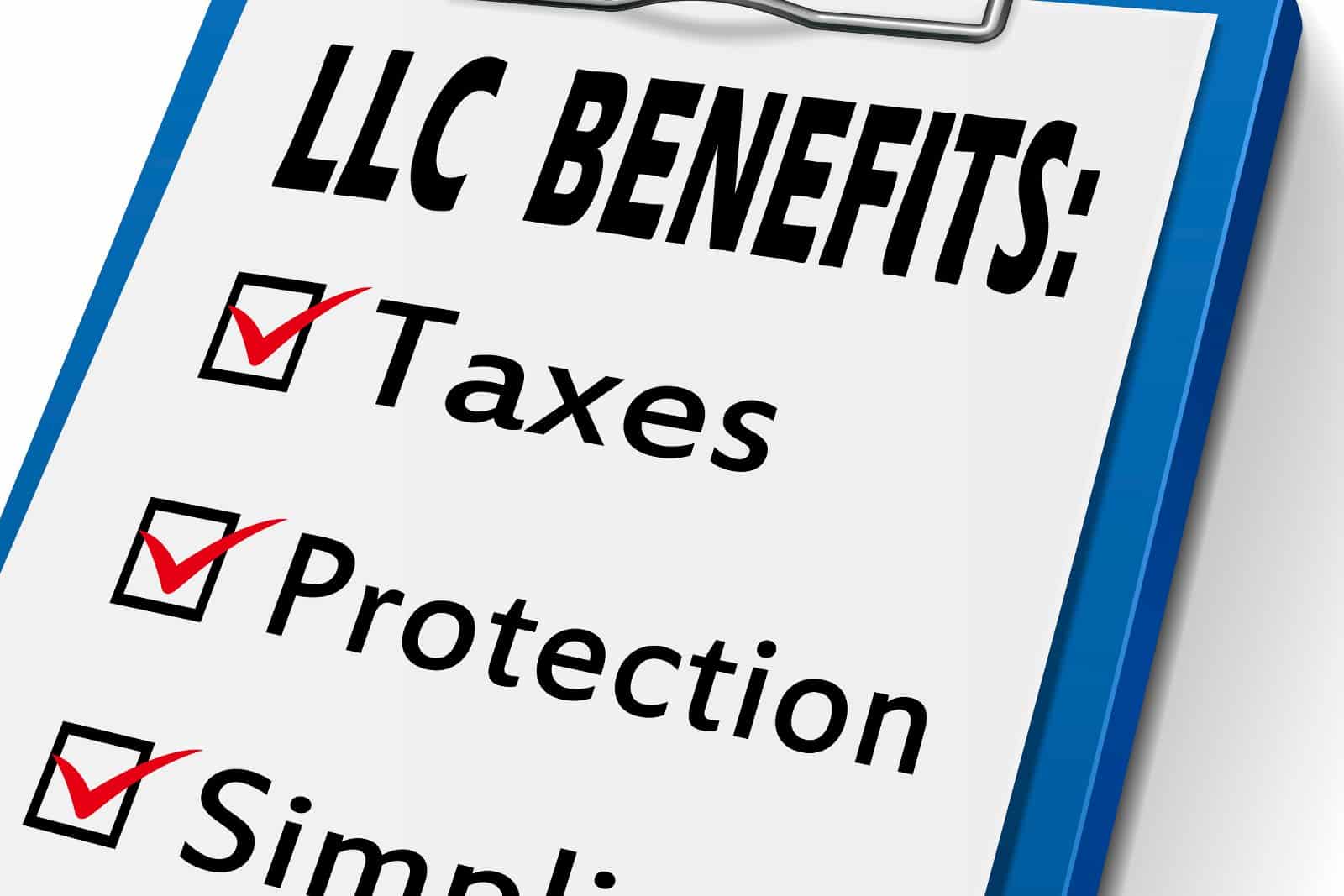There are a variety of business structures depending on your business’ goals and needs, such as:
- Sole proprietorship
- Limited liability company (LLC)
- Professional Association
- Corporation
- S-Corporation
- Partnership
- Limited Partnership
- Limited Liability Partnership
- Limited Liability Limited Partnership
But how do you know which business structure is right for your business?
[Read Transcript]
Hi. This is Barry Haimo. Thanks for tuning in to another dose of Bite Sized Bits of Knowledge, where we give you meaningful information in a short amount of time.
In today’s video, we’re talking about high level business entities. We’re going to talk about five of them in particular: sole proprietorship, general partnerships, corporations, limited liability companies, and limited partnerships.
Each of these has its own advantages and disadvantages. Some are more appropriate types of businesses for certain things than others. Some are used in combination with one another. There’s really an art and a science to doing this. To selecting them properly and certainly to implementing them properly.
So in terms of organizing them into similarities and differences, with the exception of sole proprietorships and general partnerships, they are similar in the sense that you’re creating an entity that others can act on behalf of. It protects the shareholders. And importantly, you can have very special default rules that will kick in if you don’t have governing documents, which we have a whole dedicated few videos on that, because it’s just so important to understand that you do not want these default rules to kick in.
Where they differ – if you were to organize them into where they differ – legal structures are very different. The liability exposure to the shareholders is very different. The managerial structure, flexibility, and the cost of formation and maintenance is also very different.
So the next few videos we’re going to jump into each one of those. We’re going to get under the hood in terms of the mechanics for how they work and some of these advantages and disadvantages.
Don’t forget to download our free Florida formation chart and our free business planning stress test. So thanks again for stopping by and stay tuned for more.
Let’s take a deeper look at some of those structures, as well as some advantages and disadvantages.
Types of Partnerships and What You Should Know
A partnership is generally defined by when two or more people do business together. They do not even have to “own” anything at all. More commonly, however, each partner contributes to all aspects of the business, and, unless otherwise agreed, each partner shares in both the profits and losses of the business.
There are three basic types of partnerships:
- General partnerships are when a business is divided equally between the partners and the partners share in management, liability, and profits and losses. If the partnership isn’t going to be equal, the percentage for each partner must be written down in the partnership agreement. Partnership agreements are always a good idea. Otherwise Florida statute’s default rules apply, and they may be quite contrary to your needs, goals and understanding of your agreement with your partners.
- Limited partnerships allow partners to have limited liability as well as limited input with decisions about management, and are more intricate than general partnerships. In this case, only the general partner is liable for the liabilities and debts of the business. This is why general partners are typically business entities themselves.
- Joint ventures are general partnerships but with a time limit or for a single project. They tend to involve two distinct companies working together on something specific.

While general partnerships are affordable and simple to form, there are a few important details you should know before establishing one.
Advantage: Easy to Create
The biggest selling point of a general partnership is that they are quite easy to create. Under Florida law, any two people working together for profit is considered a partnership.
Unless you formally incorporate into another type of business entity, you are characterized as a general partnership. Calling it a “joint venture” has the same result. For purposes of both state law and taxation, you are a general partnership. You need not file anything at all to get started.
Disadvantage: Easy to Dissolve
Like other business entities in Florida, general partnerships rely on state statutes to provide default rules for all aspects of governance. If you don’t have a formal agreement, general partnerships are just as easy to dissolve as they are to create. There is obviously a protocol for winding up and closing business. However the process is easier in the sense that there are on required filings.
Advantage: Flow of Personal Income
A general partnership allows for all partners involved in a business to directly pass through profits and losses to into their personal income taxes. This is similar to limited partnerships and LLCs.
So the income generated from the partnership is taxed at their personal income tax rates rather than as a separate business entity. This is great for small businesses, where immediate cash flow and profits can be a huge struggle.
Disadvantage: Little Protection
As a general partnership, all partners are liable for business debts and any legal issues that arise. There is no formal legal protection in place because you don’t incorporate the business into a separate legal entity. And this exposure to liability renders general partnerships as bad vehicles for business in most cases. It may make sense where both partners are incorporated entities.
In those cases the partners may prefer to form a new entity anyway. This vulnerability to liability is probably one of the largest downsides to a general partnership. Make sure that you are careful with products, contracts, disclaimers, and so on.
Advantage: Flexibility

General partnerships allow you to negotiate the terms relating to allocation of profits and losses, management operations and transfers of interests. This means that you can decide who works on which aspects of the business, and can decide on mutually beneficial structures, salaries, payments, and more. The problem is…
Disadvantages: Lack of Structure
When only general outlines are given, partnerships can be contentious at times. Sometimes, finances play a role, while sometimes it’s the general structure and responsibilities that cause trouble. This also means that you are liable for your partner’s decisions, which can affect profits and perception within the business.
What about other structures?
A Brief Overview of S Corps
A standard business corporation – better known as an S corporation or S corp – is like a C corporation but without the business tax. An S corporation or S corp is a special type of corporation. It’s essentially a traditional corporation – better known as a C corporation or C corp – except it has elected to be treated as a small business corporation under subchapter ‘S’ of the internal revenue code.
An S corp, however, has special tax status with the IRS. The business profits in an S corp “pass through” to the owners like with a limited liability corporation, partnership, or sole proprietorship. The owners then have to report those profits – or losses – on their own personal tax return. Like other pass-through entities, the S corp still must file an information return in the form of an 1120S. The S Corp must also prepare a K-1 for each shareholder to report their respective share of corporate income..
Advantages of an S Corp
Limited liability. As an S corp, business owners are not personally liable for the company’s liabilities or debts. Basically, an S corp allows your personal and business assets to be separate. Therefore, if a creditor sues the corporation, that creditor generally won’t be able to go after the owner’s personal assets to satisfy the debt. The liability, though, is limited, and won’t necessarily protect you from all suits. For example, you negligently caused a car accident while making a business delivery in the company vehicle, you can be liable.
Pass-through taxation. Like an LLC, an S corp isn’t a separate entity from its owners for tax purposes. As mentioned above, an S corp’s profits and losses pass through to the owner’s individual tax returns. The shareholders, rather than the business, are taxed. Doing this helps to avoid double taxation, which can also save your business money. Also, unlike with an LLC, the shareholders of an S corp aren’t subject to a self-employment tax unless they are also an employee and only to the extent of their wages.

Stock. An S corp can issue shares of stock to attract investors.
Exists in perpetuity. An S Corp is an independent entity from its shareholder. If a shareholder decides to leave the business, passes away or sells off his or her shares, the S corp will continue to exist in perpetuity.
Rules of an S Corp
While an S corp has many benefits, it also has strict requirements and operational processes.
- The owners and shareholders of an S corp must be United States citizens or residents.
- An S corp is limited to 100 shareholders.
- The business profits and losses have to be distributed proportionally to the interest of each shareholder.
- In order to form an S corp, there will be initial fees and ongoing expenses. You will have to file an Articles of Incorporation, designated a registered agent, and pay the start-up costs. You may then have annual report fees and franchise tax fees, but this is consistent with every entity formation.
- The IRS will pay closer attention to salaries and dividends paid to employees and shareholders to ensure that a “reasonable” salary is being paid to owners. This is beyond the scope of this post and will be covered later.
If you decide to elect to do business as an S corp, it’s important to know that your decision doesn’t have to be permanent. If your business becomes bigger and more profitable, you might find forming a traditional corporation is more advantageous. After a certain period of time, you may be able to choose to drop the S corp status.
What About a Limited Liability Company (LLC)?
A limited liability company is a business structure that may combine pass-through taxation that you get from partnerships and proprietorships with the limited liability enjoyed by corporations. Of all the corporate structures, an LLC is in some ways the least complex, and you only need to have one owner to get started.
As a business owner, you have to think about protecting both your business assets and your personal assets. For that reason, forming an LLC is in your best interest because it prevents an attack on your personal assets from creditors and lawsuits.

Advantages of an LLC
Pass-through taxes. Although an LLC is a company, it is not considered to be a separate entity from its owners when it comes to taxes. Basically, this means that an LLC will not have to pay its own income taxes like a corporation, which must file a separate income tax return (1120 or 1120s). Instead, the profits “flow through” to the partners and, as a result, the LLC owners report the business’s share of profit and loss on their own personal income tax returns. Doing this helps to avoid double taxation experienced by c-corporations.
Limited liability. In an LLC, business owners are not personally liable for the business’s liabilities or debts. If a creditor sues the business for not paying a debt, that creditor won’t be able to go after the owner’s personal assets to satisfy the debt. In other words, an LLC separates and protects your personal assets from the business assets.
No residency requirement. Owners of an LLC don’t have to be American citizens or even permanent residents of the United States.
No requirement for annual meetings or record minutes. With an LLC, this is one less thing you have to worry about doing. Nevertheless, it is highly advisable to document your meetings and minutes to substantiate your business operations and purpose.
Credibility. Forming an LLC allows your business to look legitimate and credible. An actual company with LLC in the title might be seen in a more favorable light by lenders, partners, and suppliers.
Flexibility. LLCs are the most flexible entities. They can be taxed in one of four ways: disregarded, partnerships, corporations and s-corporations. In addition, partners in LLCs taxed as a partnership can negotiate with far greater flexibility with respect to the profits, losses, distributions, voting, nonvoting, managerial control, etc. This is not possible in other entities, especially s-corporations.
Management. LLCs can enjoy different types of managerial structures. On one hand, the owners of LLCs, or members, can enjoy a member-managed structure. In this type of structure, the members each act as managerial fiduciaries on behalf of the company. Each member can bind the company and act on behalf of the company.
On the other hand, they can be managed by one or more managers as part of a manager-managed managerial structure. This centralized management structure is modeled after the corporate management structure, where shareholders elect directors who, in turn, appoint officers.
Disadvantages of an LLC
While an LLC has many advantages, there are also disadvantages to this type of business structure.
Self-employment tax. In s-corporations, partners only withhold Social Security and Medicare from their paychecks to the extent of their “reasonable salary”. In contrast, 100% of profits are subject to self-employment tax and withholding in an LLC. It is for this reason that you want to own your LLC interest by a s-corporation. .
Lack of uniformity. Different states have different LLC statutes. For this reason, businesses that operate in multiple states may be treated differently from one state to the next, which presents complexities in LLCs doing business in different states
Neutral
If you want to attract investors to your business, it is likely they will want to be issued shares, which is most commonly done through corporations. That being said, LLCs can be divided into voting and nonvoting units which resemble corporate common and preferred shares of stock in similar ways.

These are obviously just a few of the most common structures, there are others, and they each have pluses and minuses. Deciding on a business structure is a big decision. Contact an experienced Florida business planning attorney to help you decide what’s best for you and your business.